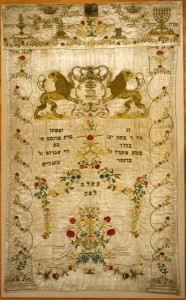An Interview with Alex Martinis Roe

Alex Martinis Roe, Encounters: Conversation in Practice, performance still, 2010.
Image courtesy of the artist.
To obtain a letter from a vending machine – even from an art vending machine – is rather unusual. In this interview, Australian artist Alex Martinis Roe explains what motivated her to create the artwork “A Letter to Deutsche Post.”
Christiane Bauer: Alex, you drafted a letter to Deutsche Post, asking the officers to reissue stamps depicting Rahel Varnhagen and Hannah Arendt. When our visitors purchase the letter, are they supposed to send it to Deutsche Post?
Alex Martinis Roe: I don’t expect visitors to send the letter to Deutsche Post, because I didn’t ask them to. They can do whatever they like with it. If they send it off, I’m happy. If they keep it, I’m also happy. (laughs) What I hope, is that they read the letter and become interested in the story.
Why did you choose to make a letter for the art vending machine? → continue reading
On our “Open Day at the Academy,” this Sunday, 27 October 2013, we will celebrate the namesakes of the new public square in front of the Academy on Lindenstrasse: Fromet Mendelssohn, née Gugenheim, and her husband Moses Mendelssohn are now immortalized on Berlin’s cityscape, following much debate and deliberation. Reason enough to find out more about this exceptional couple!

Inspired by deep religious feeling, Fromet and Moses Mendelssohn had Fromet’s wedding dress converted into a Torah curtain. They presented it to Berlin’s Jewish community, where, in the synagogue, it decorated the shrine.
You can find this and other objects relating to Moses Mendelssohn held by the Jewish Museum Berlin in our collections …
In the spring of 1761, when philosopher Moses Mendelssohn met the merchant’s daughter Fromet Gugenheim during a visit to Hamburg, his fate was sealed: he declared his love for her in a garden pavilion, and “stole a few kisses from her lips.” He returned, besotted, to Berlin and wrote to his friend Gotthold Ephraim Lessing:
“I have committed the folly of falling in love in my thirtieth year. The woman I wish to marry has no assets, is neither beautiful nor erudite; yet I am a lovesick beau, so smitten that I believe I could live with her happily ever after.”
The two were wed in June 1762. That they married for love was highly unusual: most marriages at the time were arranged by matchmakers. “[O]ur correspondence can do without ceremony,” Moses assured Fromet on 15 May 1761, in the very first of his letters to his bride: “…our hearts will respond.”
“Before I met you, my love, solitude was my Garden of Eden. But it is intolerable to me now.” Berlin, 24 October 1761 → continue reading
In the archive of the Jewish Museum Berlin, there is a moving letter that Marianne Joachim wrote to her in-laws on 4 March 1943. That same day at the Berlin Plötzensee detention center, the young woman was executed.

Farewell letter from Marianne Joachim née Prager (1921 – 1943)
© Jewish Museum Berlin, photo: Jens Ziehe
What had happened? Marianne and Heinz Joachim supposedly joined a resistance group in 1941 led by Herbert Baum. A Jew and communist, Baum had been gathering like-minded friends around him since 1933 to generate resistance against the politics of National Socialism. On 18 May 1942, the group attempted to set fire to the anti-Soviet exhibit “The Soviet Paradise” in Berlin’s Lustgarten. Among the members jailed in short order and sentenced to death were Marianne and Heinz Joachim.
We learn from her letter that finding out that her husband had already been executed on 18 August 1942 in Berlin Plötzensee was the “heaviest stroke of fate” for Marianne. Her greatest concern was for her parents, Jenny and Georg Prager. They were deported in March 1943 to Auschwitz and Theresienstadt where they were killed. Marianne’s sister, Ilse, was able to escape on one of the last Kindertransports to England. Heinz Joachim’s father Alfons, died at the end of 1944 at the concentration camp Sachsenhausen. His mother, Anna, did not have a Jewish background and therefore survived the National Socialist period, as did his brothers. → continue reading


